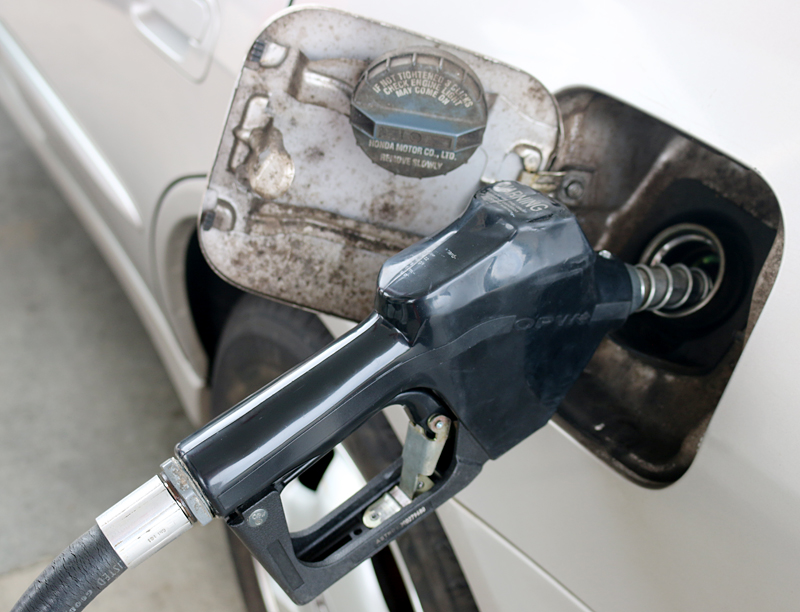Imagine a clean and affordable fuel which is derived from a supposedly plentiful source that is found virtually everywhere — and not from the underground reserves of the remains of living organisms in some politically unstable region; or from a natural substance which requires growing it in hundreds of acres of precious land.
Is Cheap Gasoline Manufactured From Carbon Found in Air The Fuel of the Future?
Carbon Engineering creates clean fuel out of air. The clean energy company — which was founded in 2009 and is based in the greater Vancouver metropolitan area — blatantly states so on its official Internet web site.
Two groundbreaking technologies are used to create the final fuel product: the first captures and removes carbon dioxide directly from the atmosphere and claims to have been doing so since 2015; and the second technology is claimed to have synthesized the aforementioned carbon dioxide into clean and affordable transportation fuels by combining it with hydrogen extracted from water since 2017.
Steve Oldham — who is the chief executive officer of Carbon Engineering — explains in this video the benefits of the technologies used to create inexpensive fuel while simultaneously giving a tour of the facility.
Oldham believes that this model is very scalable and will have demand from markets around the world; and that all that is needed is air and water as feedstocks — as well as some electricity. The company is currently seeking the licensing of its technology to others in order to facilitate faster growth.
“This is an engineering breakthrough on two fronts: A potentially cost-effective way to take CO2 out of the atmosphere to fight climate change and a potentially cost-competitive way to make gasoline, diesel, or jet fuel that doesn’t add any additional CO2 to the atmosphere”, according to this article written by Stephen Leahy for National Geographic. “The next step is to have a number of scaled-up plants producing hundreds of thousands of barrels of carbon-free fuel, to drive down costs further, much as solar and wind energy costs have plummeted over the past decades as scale has risen. As prices fall, more governments may get on board with the idea of pulling CO2 out of the air.”
One full scale plant will supposedly eventually be capable of capturing one million tons of carbon dioxide per year; and it will operate using inexpensive renewable energy in the year 2020. The 200 barrels of synthetic fuel manufactured at one of these plants per day can either be blended — or it can used on its own as either gasoline, diesel, or jet fuel; and it is compatible with engines and infrastructure which are currently available. Additionally, the fuel is effectively carbon neutral because when it is burned, it emits the same amount of carbon dioxide which was used in manufacturing it — while simultaneously significantly reducing emissions from the transportation sector by displacing fossil fuels.
The goal is to consistently keep the cost of each ton of carbon dioxide which is extracted from the atmosphere at less than $100.00, instead of it currently being more expensive than a barrel of oil.
“Until now, the costs of CO2 removal, or what’s known as ‘direct air capture,’ were believed to be at least $600 per ton, according to the aforementioned article. “That was far too much to be useful in sucking large amounts of CO2 out of the atmosphere. Every year the world burns enough fossil fuels to add close to 40 billion tonnes of CO2. However, keeping global warming to less than 2 degrees C (the international target to avoid the most dangerous impacts) will likely require ‘negative emissions’ — some way of taking lots of CO2 out of the atmosphere and storing it permanently, according to the Intergovernmental Panel on Climate Change (IPCC).”
The United States is “facing climate and air pollution costs reaching at least $360 billion annually,” according to a report which was released in 2017.
In addition to liquid fuel, captured atmospheric carbon dioxide can be used to produce materials such as steel, concrete, fillers, and coatings; or to produce chemicals — such as plastics, industrial chemicals, fertilizers and carbonates.
Summary
How much do you want to bet that if the direct air capture technology of Carbon Engineering successfully results in manufacturing less expensive jet fuel which will save airlines millions of dollars, not only will little to none of the savings be passed on to customers — but some airlines may even continue to keep their exorbitant fuel surcharges carrier-imposed fees?
Direct air capture technology sounds too good to be true; but I hope that it is indeed true. To take a plentiful resource such as carbon dioxide out of the air and convert it to cheap gasoline, diesel and jet fuel while simultaneously helping towards protecting and improving the environment would go a long way towards cleaning up our air while satisfying our voracious need for energy for the foreseeable future.
Photograph ©2015 by Brian Cohen.

